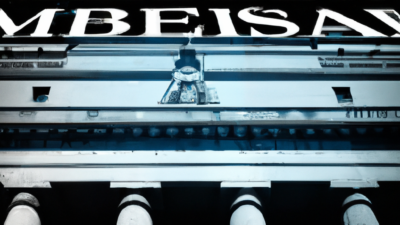**Unveiling the Intricacies: An Exploration of Monetary Policy Tools**
In the intricate tapestry of modern economies, monetary policy stands as a pivotal mechanism employed by central banks to influence economic activity. The arsenal of tools at their disposal is both vast and nuanced, each with the potential to steer economies towards growth, stability, or recovery. As nations grapple with challenges ranging from inflationary pressures to recessive downturns, the strategic deployment of these instruments becomes paramount. This article delves into the core of monetary policy tools, examining their functions, impacts, and the delicate balance central banks must maintain to foster economic well-being. Join us as we unravel the complexities and explore how these tools shape the financial landscape of nations.
Certainly! Here is a suggested content outline for an article on the topic "Are Monetary Policy Tools":
Monetary policy tools are instruments used by central banks to regulate the supply of money and influence a country's economic activity. These tools are pivotal in controlling inflation, managing employment rates, and stabilizing the financial system. Central banks, such as the Federal Reserve in the United States, employ a variety of tools to achieve their macroeconomic objectives. The primary monetary policy tools include open market operations, the discount rate, and reserve requirements, among others.
Open market operations involve the buying and selling of government securities in the open market. When a central bank buys securities, it injects liquidity into the banking system, lowering interest rates and encouraging borrowing and investment. Conversely, selling securities withdraws liquidity, raises interest rates, and helps cool an overheating economy. This tool is frequently used for its flexibility and immediate impact on the money supply.
The discount rate is the interest rate at which commercial banks can borrow from the central bank. By lowering the discount rate, the central bank makes borrowing cheaper for commercial banks, which in turn can lower their own interest rates for consumers and businesses. This stimulates economic activity by making loans more accessible. Raising the discount rate has the opposite effect, tightening the money supply and curbing inflationary pressures.
Reserve requirements refer to the amount of funds that commercial banks must hold in reserve against deposits. By adjusting these requirements, central banks can directly influence the amount of money that banks can lend. Lowering reserve requirements increases the money supply by freeing up more funds for lending, while raising them restricts the money supply.
In addition to these traditional tools, central banks have also adopted unconventional monetary policy measures, particularly in response to financial crises. Quantitative easing (QE) involves large-scale purchases of financial assets to inject liquidity into the economy. This approach was prominently used during the 2008 financial crisis and the COVID-19 pandemic to support financial markets and promote lending and investment.
Forward guidance is another unconventional tool where central banks communicate their future policy intentions to influence financial conditions and economic expectations. By providing clarity on the future path of interest rates, central banks can shape economic behavior and stabilize markets without immediate policy changes.
Each tool has its strengths and limitations, and central banks often use them in combination to achieve their goals. The choice and effectiveness of these tools depend on the economic context and the specific challenges being addressed. For instance, during periods of low inflation and high unemployment, central banks may prioritize tools that stimulate economic growth. Conversely, in times of high inflation, they may focus on tightening measures to prevent the economy from overheating.
In summary, monetary policy tools are essential mechanisms through which central banks steer the economy. By carefully managing the money supply and interest rates, these institutions strive to maintain economic stability, promote sustainable growth, and achieve their inflation and employment targets. The dynamic interplay of these tools reflects the central banks' critical role in fostering a healthy and resilient economic environment.













